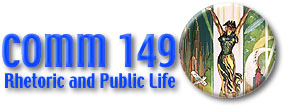
Office: HGH 210; phone: (408) 924-5378
Email: wooda@email.sjsu.edu
Web: http://www.sjsu.edu/faculty/wooda

|
Dr. Andrew Wood Office: HGH 210; phone: (408) 924-5378 Email: wooda@email.sjsu.edu Web: http://www.sjsu.edu/faculty/wooda |
|
Stamp from the 1939 World's Fair |
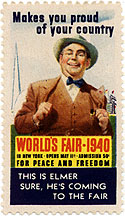
Stamp from the 1940 World's Fair |
Susman illustrates the planners as would-be teachers and guardians of a particular view of the future - one that defined a necessary interdependence of distinct groups. Remember that, during the prewar period, labor relations were hardly amicable as economic depression and outdated management theories about the proper role of labor within public life inspired many workers to flirt with socialism. One might remember the image of the Democracity exhibit in the Perisphere with its dozen social groups converging toward the center of the dome, signifying the power of co-operation within a benignly capitalist New Town. Planners were confident that building the right set would invite human actors to assume their proper social roles.
Susman contrasts the planners' confidence in their ability to shape New Americans with the dominant motif of 1930s public life, "the people." This rhetorical construct, inspired perhaps by a growing respect for averages rather than idiosyncrasies, demonstrated the power of commonalties to replace regionalism, factionalism, and even individualism.
In many ways, Susman's thesis clashes with Gelernter's claim that the architecture and planning of the 1939 Fair influenced generations of people to adopt a corporate molded view of tomorrow. Perhaps, this clash is no better evidenced than by the contested role of the machine at the Fair. As we discussed previously, the machine and the garden metaphors illustrate a pronounced ambivalence about the impact of industrialization on American public life. Government and corporate planners trusted in popular faith in the power of technology to unify a troubled nation. The Westinghouse Middleton Family, for example, offered a charmingly "typical" group of people discovering thrills and wonder as they experience the joys of electricity and consumer appliances at the Fair. Below are two postcards that further illustrate the corporate emphasis of the fair. Click the ![]() button to enjoy the full-size view.
button to enjoy the full-size view.
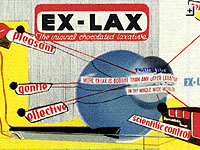
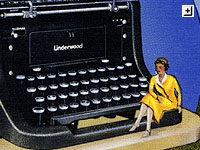
Indeed, Susman notes a New York Times response to the commercialism of the Fair. Here is an excerpt from the article not found in our course reading:
However, according to Susman, a significant number of Americans feared that the increased use of machines would eliminate jobs: "Here was a paradox that Fair planners had hardly imagined in their optimistic vision of the technological future" (p. 22). Their response was to draw attention away from the machine and toward the process through which people could use machines to improve their lives. Even so, it appears that "the people" did not rally to the planners' vision without some reservation.
Susman offers two reasons why the 1939 Fair, unlike its 1933-34 predecessor, failed to turn a profit: (1) exorbitant cost (entrance to the Fair cost 75 cents), (2), the sense that most visitors failed to appreciate its goal as a "teaching aid." However, it was the arrival of war in Europe that most directly explains why the 1939 motto ("Building the World of Tomorrow") was replaced by the 1940 motto ("For Peace and Freedom"). On a deeper level, was the Fair a success at shaping public life? It's hard to tell. Almost 45 million people visited the Fair in its combined 1939 and 1940 incarnations (Mattie, 1998, p. 193).
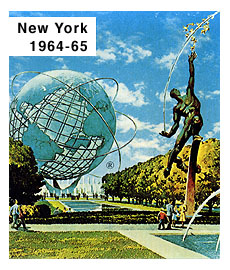 Scrapbooks containing postcards, pamphlets, trinkets, and other ephemera from the Fair remain lovingly preserved in homes around the country. Moreover, visions of the Fair - including the General Motors interstate highway system and the Democracity suburb - came true as predicted. Finally, the same site where the Fair was situated hosted the 1964 World's Fair. Today, the gleaming Unisphere (image to the right) rests where the Perisphere stood before World War Two. There's no doubt that the Fair provides an important artifact of public life in the 20th century - even though the Fair failed to live up to its planners' most optimistic expectations.
Scrapbooks containing postcards, pamphlets, trinkets, and other ephemera from the Fair remain lovingly preserved in homes around the country. Moreover, visions of the Fair - including the General Motors interstate highway system and the Democracity suburb - came true as predicted. Finally, the same site where the Fair was situated hosted the 1964 World's Fair. Today, the gleaming Unisphere (image to the right) rests where the Perisphere stood before World War Two. There's no doubt that the Fair provides an important artifact of public life in the 20th century - even though the Fair failed to live up to its planners' most optimistic expectations.
Towards the conclusion of his essay, Susman notes:
Doing so, Susman opens the door to the critique of this Fair and all attempts to shape public life through the subtle invocation of the machine. As individuals and groups are sifted and ordered to fit the dominant scheme, some people buy into the corporate and government plan while others resist; some are invited and others rejected. In our except from Robert W. Rydell's chapter, we explore this process of discrimination more directly.